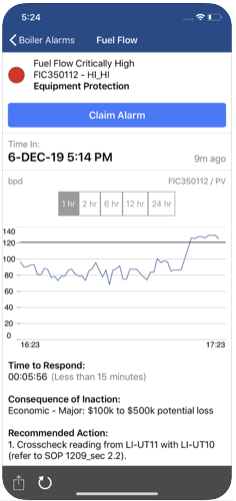Smart phones and tablets have been a revolution for connecting us to other people and information more quickly, efficiently, and effectively than was possible prior to their arrival. For manufacturers and producers, one example is the control system human machine interfaces (HMIs) that have arrived in this mobile environment.
In a Control Engineering article, Five essential criteria for effective mobile HMIs, Emerson’s Mariana Dionisio, Camilo Fadul and Cindy Scott share criteria for secure, easy to use, and collaborative mobile HMIs.
Mariana, Camilo and Cindy open noting the balance between operational technology (OT) and information technology (IT) requirements.
To select the right combination of technologies and tools, organizations need to consider essential criteria such as security, ease of use, level of access and detail, and collaboration. An effective mobile human-machine interface (HMI) strategy evaluates how to bring HMI interfaces from the control room to the plant via web browsers on phones, tablets, or rugged laptops.
The five criteria they highlight include:
- Native integration
- Remote operator stations
- HTML5 mobile-ready HMI
- Mobile applications
- Always consider total cost of ownership
I’ll highlight 2 and invite you to read the article for the other 3. From a native integration perspective, which means:
…less engineering work because the process control systems and mobile technologies are designed to share and securely transfer information without requiring duplication of the system configuration. For example, graphics, alarms, trends, and real-time data from an operator workstation can be automatically viewed in a web browser on mobile devices without having to reconfigure the control system on the mobile platform.
From an IT perspective, native integration having:
…mobile architectures that employ similar interoperability, security levels, and communications simplifies implementation.
The second criterion on remote operator stations:
…extend (full or limited) control outside of the control room, to the plant floor, and beyond. This interface can be a full-featured tablet or hardened laptop that gives a full view and defined control to a team member. It resides on the control network or the demilitarized zone (DMZ) to give a mobile team member the same power and visibility as an operator in the control room.
They highlight the need for these remote operator stations for sites with small staffs. These remote operator stations:
…provide full operator access in the field, allowing the mobile worker to perform tasks such as confirming manual steps in a batch process, performing commissioning, and bringing equipment back online.
Read the article for more on the importance of HTML5 as the visualization platform, additional mobile applications for access to other critical information & colleagues and evaluating to the total cost of ownership.
Visit the DeltaV Mobile section on Emerson.com for more on how it enables staff to improve operations performance and safety by having the operation available on a mobile platform. Read here how Emerson can help you in driving a mobile HMI strategy. You can also connect and interact with other DeltaV experts in the DeltaV group in the Emerson Exchange 365 community.








